.
SpaceX’s Dragon spacecraft is continuing to make solid progress during the early years of its incremental roadmap, a path that has a firm focus on sending humans to Mars. With successful Commercial Cargo missions already under its belt, Dragon is already targeting the role of transporting NASA crews to the International Space Station (ISS)
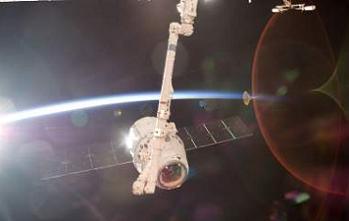
The next Dragon mission, the third under SpaceX’s Commercial Ressuply Services (CRS) contract with NASA, will also aim to complete another milestone, as the CRS-3 (SpX-3) Dragonlooks forward to a ride on the next version of the Falcon 9 launch vehicle.
Falcon 9 v1.1 is at the center of two major milestones in SpaceX’s future ambitions. The first involves the increased power of the new Merlin 1D engines, arranged in an “octagonal” pattern on a longer first stage.
A single Second Stage Merlin VacD engine will be responsible for the final push to orbit. Also, 27 of these engines will power the three cores on the Falcon Heavy, set to debut next year.
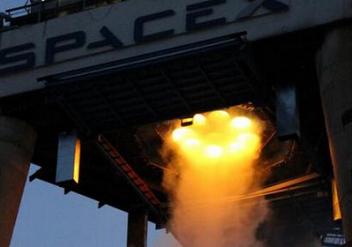
Following the successful conclusion of development firings at SpaceX’s Rocket Development and Test Facility in McGregor, Texas – the Merlin 1Ds are currently undergoing validation testing – with a test firing conducted on Thursday.
Thanks to the new Falcon 9′s increase in capability, SpaceX note future Dragon spacecraft – while always packed to the brim – riding with the upgraded Falcon will be able to carry a greater mass to the ISS, if NASA manifests denser cargo for Dragon, or heavy items for the trunk.
“Dragon is volume-limited, meaning we always launch Dragon with its volume capacity filled,” noted SpaceX spokesperson Christina Ra to NASASpaceFlight.com. “The original Falcon 9 was able to deliver 10,454 kg to LEO, while the upgraded Falcon 9 can deliver 13,150 kg.”
The future aim of the new Falcon 9 is more obvious when using the vehicle’s other name, the Falcon 9-R – with “R” standing for “Reusable”.
Although the new Falcon 9 will be tasked with a number of satellite launches, ahead of launching the CRS-3 Dragon to the ISS, the rocket will eventually sprout legs.
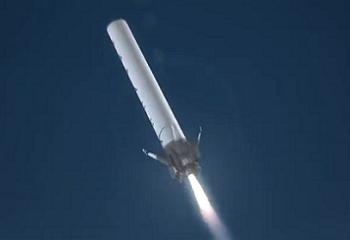
Revealed to the public, via a speech to the National Press Club by SpaceX CEO and Founder Elon Musk in 2012, the aim is to create a fully-reusable launch system that results in both the First and Second Stages returning to Earth, allowing them to be refurbished for another launch.
Testing has already begun, with the Grasshopper system currently testing hardware elements, propulsive landing and the landing legs structure, at the McGregor facility, with numerous incremental successes already achieved.
The Dragon spacecraft has always been designed to return to Earth, providing NASA with much-needed downmass capability from the ISS.
However, while every Dragon launched thus far has successfully returned home, the current method of parachute landing into the Pacific Ocean will eventually be replaced by propulsive landings on terra firma.
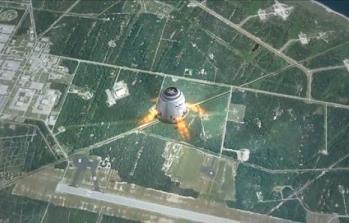
With future Dragon spacecraft sporting a series of eight SuperDraco liquid engines – built into the side walls of the capsule – these thrusters will provide an initial Launch Abort System (LAS) capability, by producing up to 120,000 pounds of axial thrust to drive the Dragon away from a failing launch vehicle.
Because the system is integrated with the Dragon – as opposed to a Tower system that normally requires jettison shortly after first stage flight – the spacecraft can technically abort within much longer periods.
However, the big advantage – per SpaceX’s ambitions – is the use of the engines during the end portion of the mission, allowing Dragon to land propulsively. Once this capability is online, in tandem with the return of the First and Second stages, SpaceX will be in the position of returning all of the launch system hardware to the ground for reuse.

Propulsive landing of the Dragon will be one of the key technologies used when SpaceX begin to fly crews on the spacecraft. However, the timing of the switch from water to ground landings will be negotiated between SpaceX and NASA.
“As we’ve noted in the past, future iterations of Dragon will have the ability to propulsively land. SpaceX certainly sees value in implementing a propulsive landing system prior to crew launches but timing for implementation will be something we discuss with NASA as they are the primary customer for both types of flights,” added Ms. Ra.
As part of their drive to fly humans on the Dragon, SpaceX are continuing to work through the milestones of their Commercial Crew Integrated Capability (CCiCap) contract with NASA.
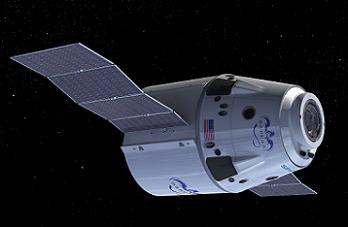
The company recently completed the fifth and sixth milestones for SpaceX, and remain on target to complete all 14 of its CCiCap milestones by mid-2014.
The latest milestones involved the presentation of SpaceX’s human certification plan, outlining testing, demonstrations, analyses, inspections, verifications and training events. This was followed by a review of the upcoming pad abort test, which is currently targeted for later this year or early next year from Cape Canaveral Air Force Station’s Space Launch Complex 40 in Florida.
“The beauty of having the pad abort test review was it allowed both NASA and SpaceX to start coalescing toward an understanding of what will be tested and how we’ll measure success,” noted Ed Mango, NASA’s CCP manager. “We’re really looking forward to seeing SpaceX’s pad abort system take off from along Florida’s Space Coast.”
The Pad Abort test will also be another milestone for the SuperDraco engine development, with the test involving a Dragon being launched from the test stand via the ignition of the abort engines, prior to the initiation of the separation command. At around 5,000 feet, the spacecraft’s parachutes will deploy resulting in a splashdown in the Atlantic Ocean.
While funding concerns for the Commercial Crew Program have resulted in internal manifests (L2) showing the first NASA crew to fly on a commercial vehicle to the ISS (USCV-1) has currently slipped to the end of 2017, SpaceX should be in the position to debut the crewed Dragon via an internally selected crew, sometime around 2015.
The company noted a crew is “still to be determined. We/NASA do not yet know who will comprise the inaugural flight,” options may range from three-time shuttle astronaut Garrett Reisman – SpaceX’s senior engineer working on astronaut safety and mission assurance – through to Mr. Musk himself.

Mr. Musk has made no secret of his ambition to fly into space, claiming in an interview with the BBC’s Jonathan Amos that he wants to push his company forward towards Mars missions, not least because he wants to be able to go to the Red Planet himself, before he gets “too old”.
SpaceX’s aspirations of heading to Mars may provide a unique security blanket for Dragon’s future, regardless of the uncertainty surrounding NASA’s funding levels for Commercial Crew.
“SpaceX was founded to develop the technology to get humans to Mars – to make humanity multi-planetary,” added Ms. Ra. “Everything we do is an incremental step towards that goal, including Dragon developments.”
Quelle: NASA
